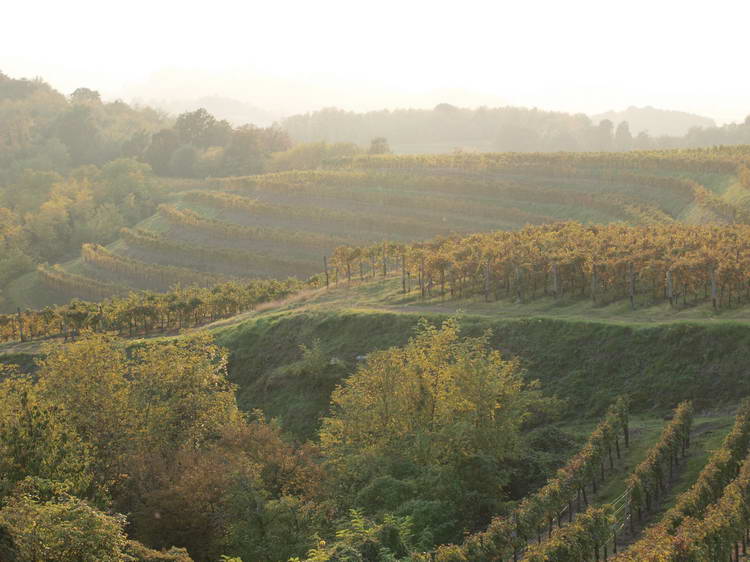COLLIO
The fairy tale of a territory
Once upon a time (225 million years ago) a very ancient calcareous rocky ridge stretched out in front of the pre-Alpine and Alpine chains of what is now the Friuli Plain.
The ancient sea, with violent storm surges, and the atmospheric agents, with very violent storms and hurricanes, disintegrated it, causing its materials to collapse to the bottom of the sea, in more or less voluminous fragments, often very fine. These sediments, covered by other sediments, thickened over the millennia, giving rise to the Flysch (rock characterised by an alternating succession of fine-grained marls and sandstones – sands cemented by calcium carbonate).
70 million years ago, tectonic uplift began, which turned the whole area into dry land.
Over the following millennia, atmospheric and environmental factors (heavy rainfall and torrential streams) eroded much of the surface material, bringing to light a series of hills, that can still be admired today, which the people of our area have called COLLIO.
The Collio soil derives from the disintegration of the Flysch and in particular of the bluish marl (known as PONKA), the least resistant, which turned into a clayey soil varying in colour from light brown to reddish ochre (depending on the content of iron salts and other elements), which has proved to be particularly suitable for growing vines.
The PONKA not only gives rise to the Collio soil, but deep down in the subsoil, while still compact, it acts as a sponge, retaining rainwater and then gradually releasing it to the roots of the vines, so that they are rarely exposed to drought.
The COLLIO lies on the border with the Republic of Slovenia, indeed part of it lies in Slovenia, and there it is called BRDA.
It is a crescent-shaped area limited to the west by the Judrio stream and to the east by the Isonzo river. The rest is bounded by the Friuli plain and the border with the Republic of Slovenia.
It is a small territory, but the love of its inhabitants for these lands, for their work and for the products that can be obtained, has meant that Collio can provide authentic gems when it comes to oenology.
Climate and wine

The daily exposure to the sun and the right amount of rainfall characterise the entire area.
The particular territorial conformation of the Collio, made of hills of medium height but with varying exposure, interspersed with valley bottoms, where pockets of colder air often accumulate, means that there is good ventilation guaranteed by constant flows of air uphill/downhill. The generally moderate windiness is interrupted occasionally by strong “Bora” winds from the north/north-east.
From the highest locations, on clear days, one can see, in the distance, the sea, which is also capable of influencing the Collio climate with its mitigating action.
Mild even on winter days, therefore, especially on the southern slopes, the climate is characterised by a constant temperature range between day and night.
These are the ingredients that allow the grapes to ripen at their best, enriching themselves with sugars, acids, aromatic and polyphenolic substances that, transmitted to the musts, first, and then to the wines, also thanks to the skilful work of the vine growers, give products that are never banal, complex, structured and of great class.
